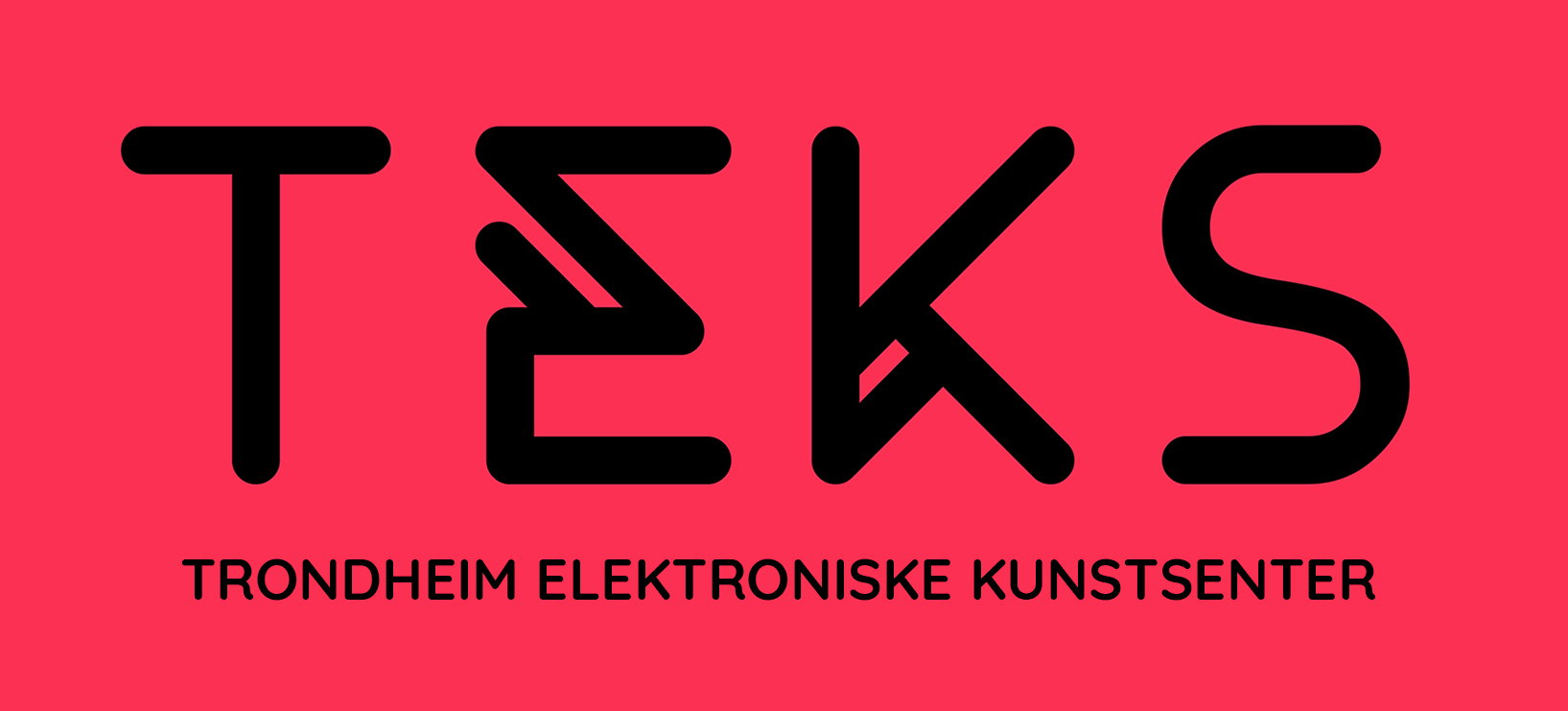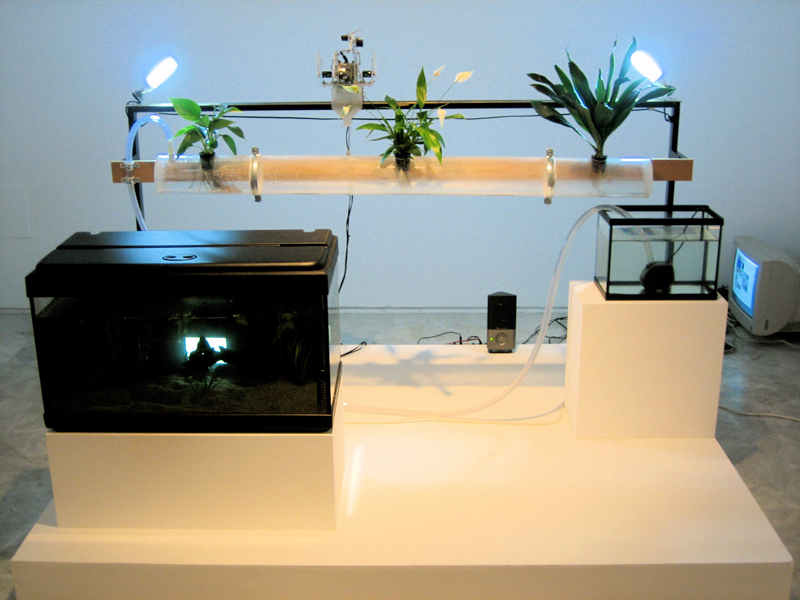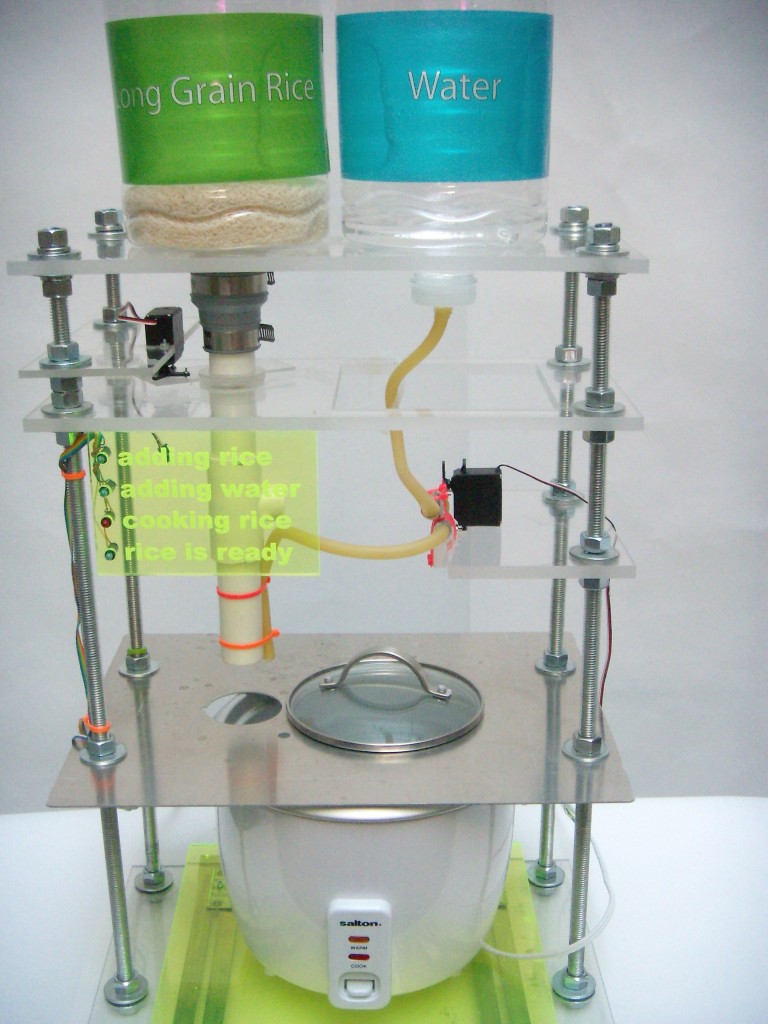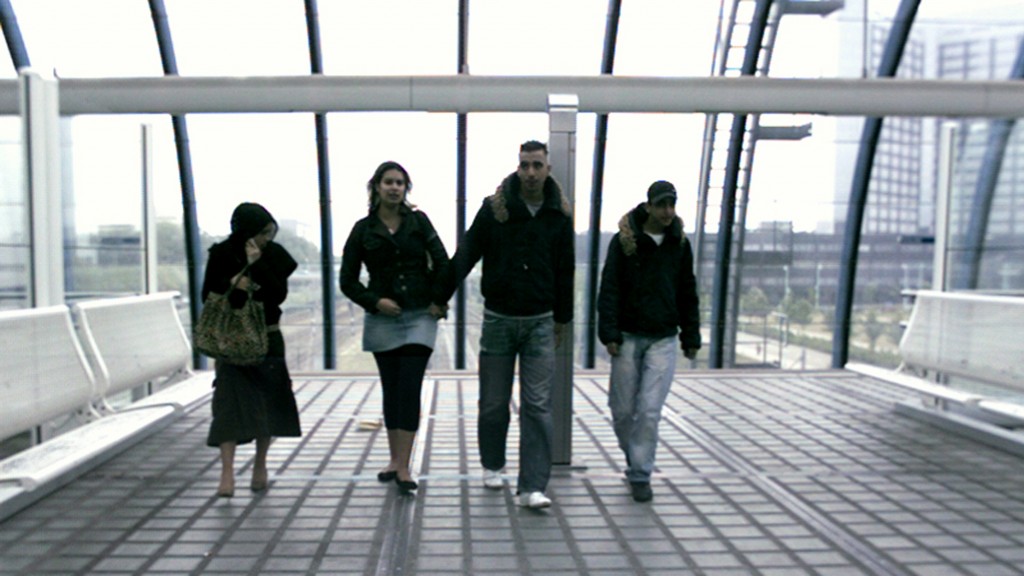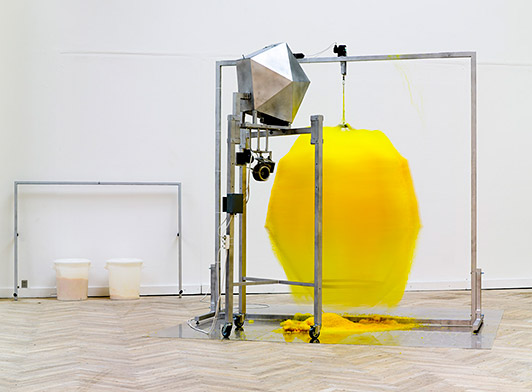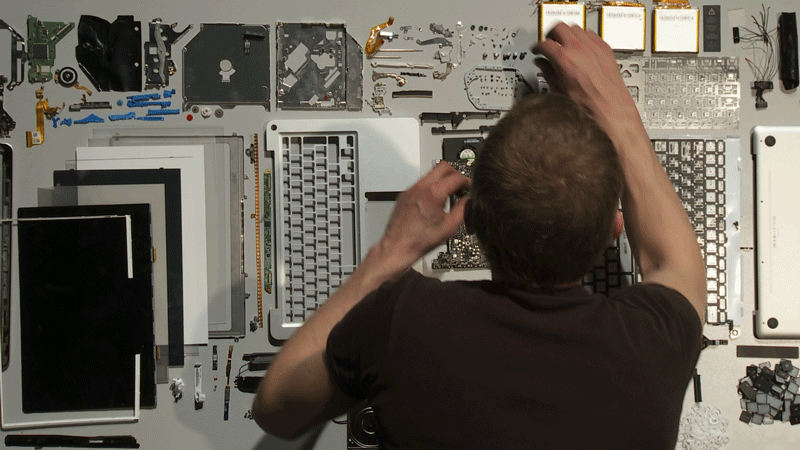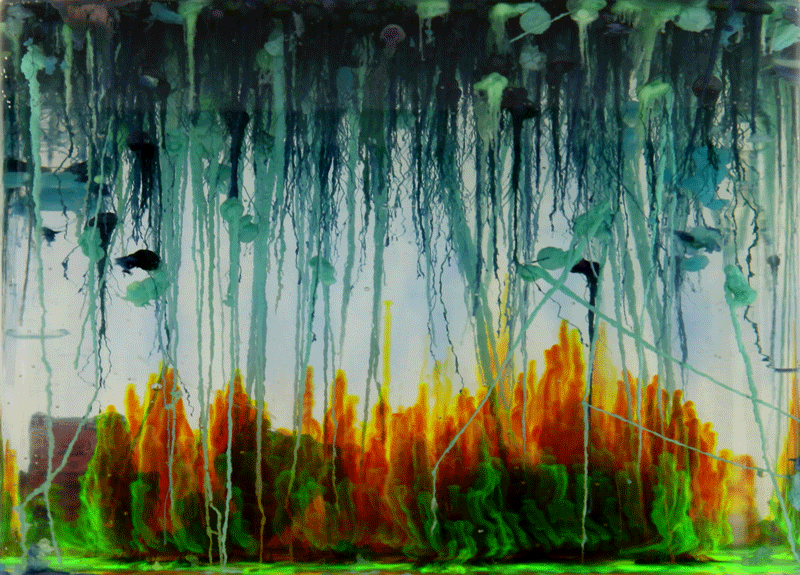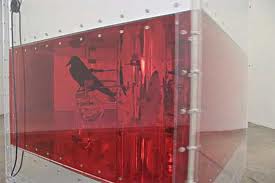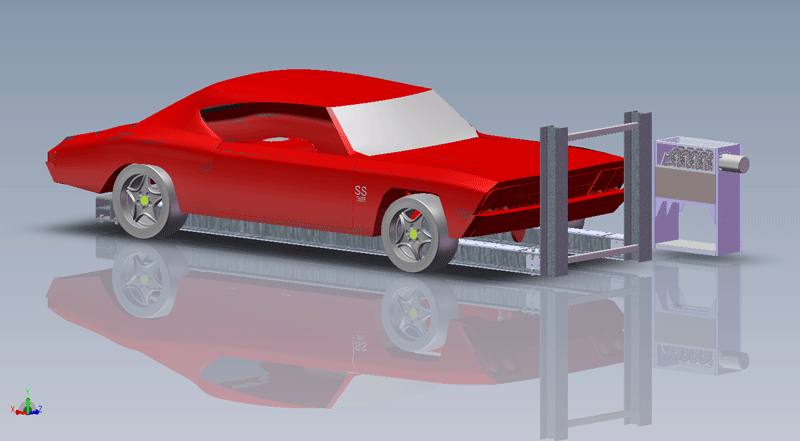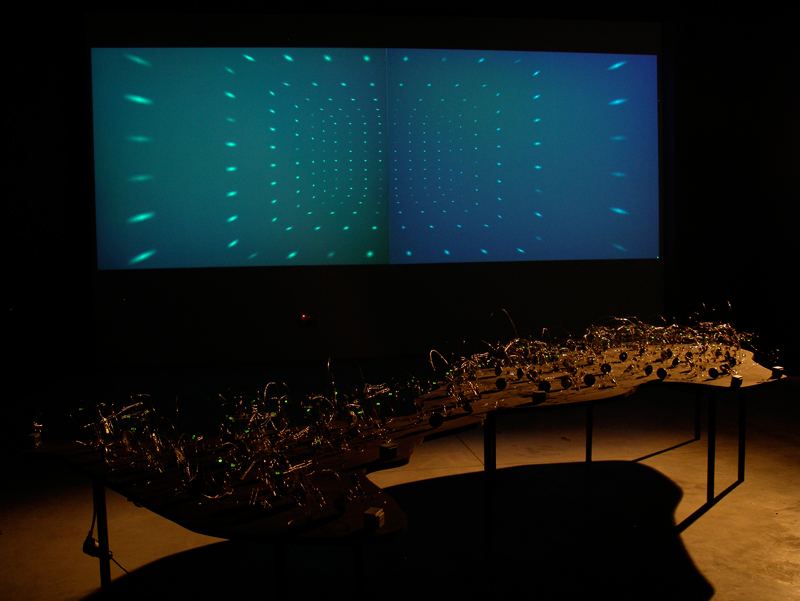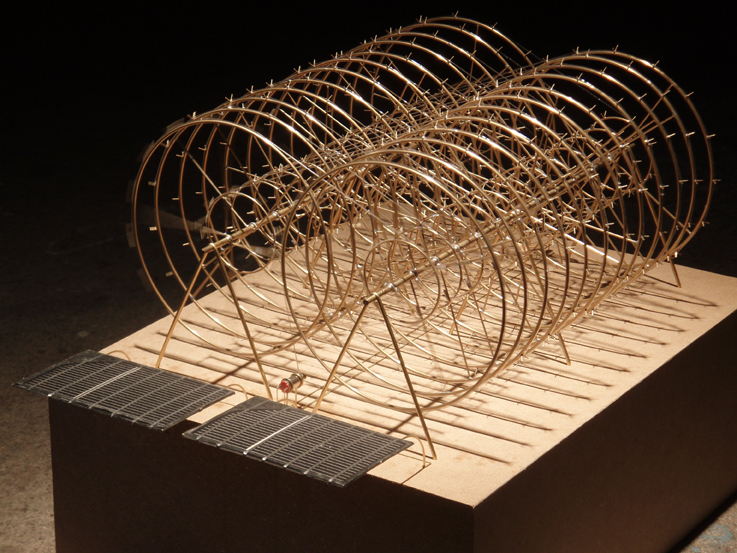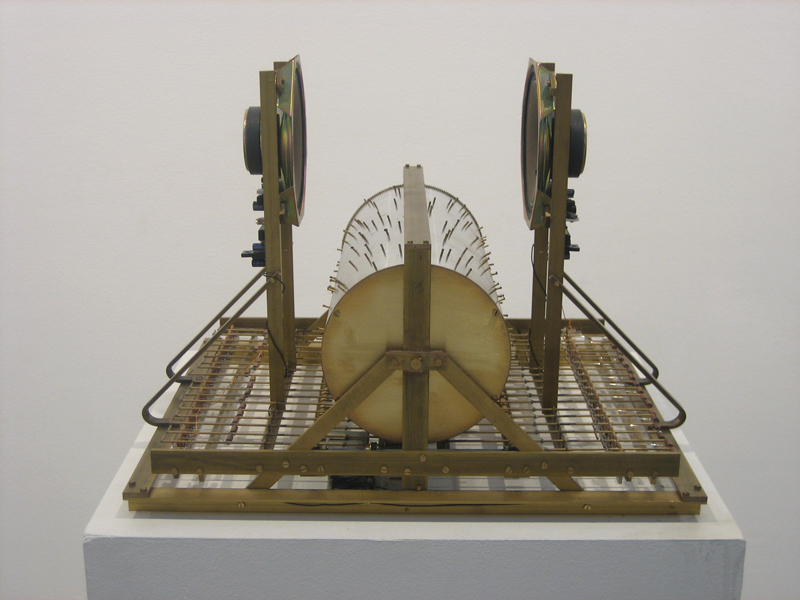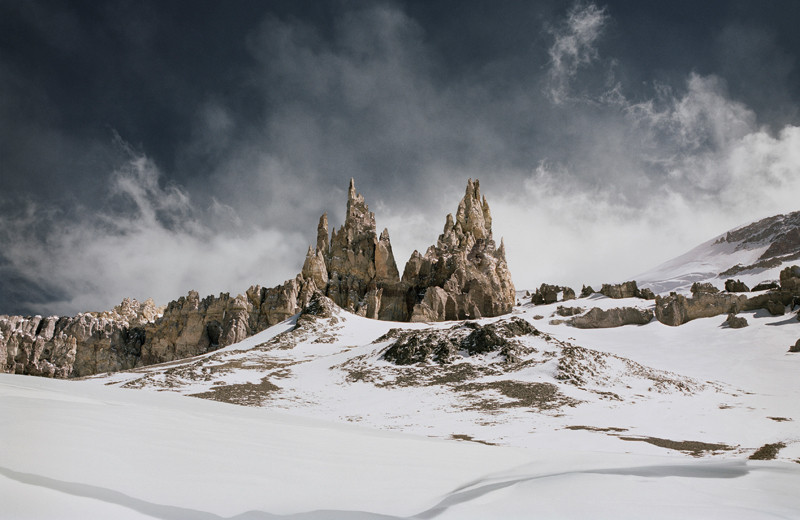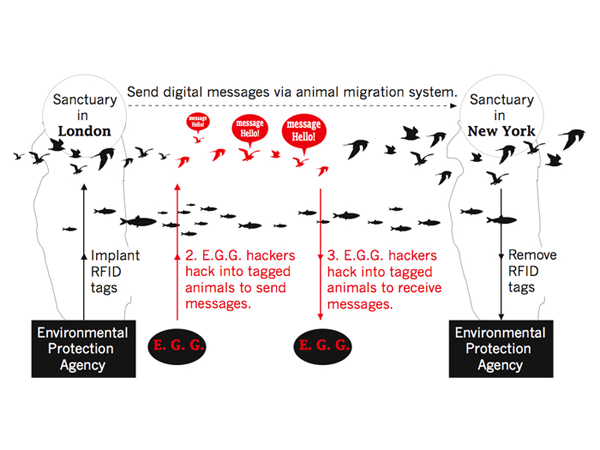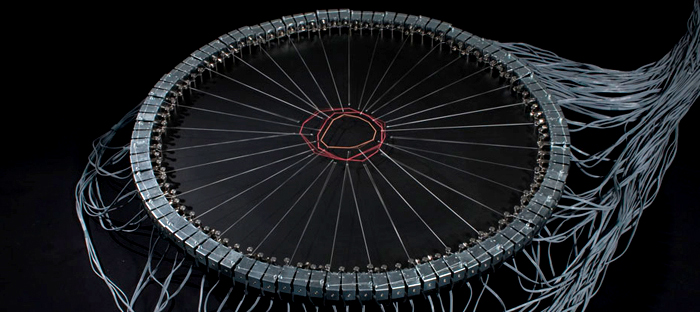Meta.Morf 2010 – New.Brave.World!
Exhibitions, October 7 – November 7.
[tab:CURATORIAL STATEMENT]
New.Brave.World!
By Alex Adriaansens [exhibitions] and Angelica D. Schmitt [conference].
Today’s pictures of planet earth are showing a mesh of satellites being in orbit. It represents the largest surveillance and information distribution infrastructure mankind has ever created. Anything and anybody can be connected to everything wherever it is located. All information flowing from one place or person to another is passing this grid of satellites or follows the fibre optic cables that has been buried in the ground in all streets of our cities and crossing all oceans. Out of this technical infrastructure social and cultural networks spontaneously emerge, and grow and diminish through interaction, but at the same time this infrastructure facilitates extreme surveillance and control mechanisms. Interaction in this context is the formation of connections and networks, and the bringing about of organisation and structure. Interaction thus changes bodies and objects that ‘inform’ themselves via these interactions that generate diversity and variation of ‘bodies’ and objects. To better understand the working principles of networks, its performative character and its underlying interactions as new fields of interest within the arts, artists are researching and experimenting these principles in very divers ways. In ‘The Conversation’, a work by the German artist Ralf Bäcker (D), an autonomous apparatus incorporates an analogue (99 solenoids/magnets, rubber bands) and a digital part (computer/software) that together create a network of interrelated elements. These almost inseparable elements in the network try to adapt to each other. As the process does not perform a linear program it is not obvious which part controls whom. The machine has 99 solenoids mounted in a circle pulling three rubber bands (that function like attractors) in the centre of the circle. Each magnet works autonomously and tries to adapt to the forces in the network. The aim of the system is to keep a balance of forces. The rubber band, to which all solenoids are connected, acts as mediator between the single solenoids. The work Jose Manuel Berenguer (ES) takes a different approach, here the issue of self-organisation of autonomous agents in networks is the research objective. He studied communities of fireflies as a starting point for his work ‘Luci – No Name and No Memory’. In specific groups of fireflies the male start to flash individual light signals to attrack females, there is no pattern but a chaotic flashing at first, after a short while all fireflies get in sync with each other and start to flash in rhythms at the same time. In the installation itself there are no fireflies; instead Berenguer used 60 electronic and 64 computing elements that follow the principles of self organisation within a network. The individual conduct of each agent, whether analogue or computational, gives rise to Luci: No Name and No Memory and generates a subtle audiovisual experience.
Understanding how basic forces work and what kind of structures spontaneously arise through self-organization is one of the underlying topics in the art works presented at the Metamorf exhibition. In the art works this is expressed in the design of networks and interaction in and between them; the relationship between power, control and self-organization in technological systems and in social networks; the issue of diversity and variation; and the question of form finding principles of organic and non-organic materials. Form in this context can be described as structured and informed matter of any kind. Form can develop itself without conscious human intervention, or through processes which are designed and controlled by us but parallel also follow their own organising principles. Within this context the Metamorf exhibition has an emphasis on the transformative and manipulative forces of technology instead of its symbolic and representative qualities an issue addressed in many events in the nineties. The transformative force of technology is probably best expressed in the works of Jonathan Schipper titled ‘Lie’ and Herwig Weiser ‘Lucid Phantom Messenger’.
In the work of Schipper we see a car slowly crashing against the wall of the exhibition space, it takes about two weeks before the crash is completed and the car gets its final shape. In this work the car, as a symbol of modern western life style, crashes in a sublime visual spectacle. The forces the car is exposed to via a pulling system, are absorbed by the car. One cannot really see that one is witnessing a car crash since all is performed in extreme slow motion. ‘Lucid Phantom Messenger’ by Herwig Weiser, is also performing itself in time but with varied temporalities and in a much more complex setting of forces working upon each other. The work uses electro-chemical processes, programmed through an electronic control system to generate sculptured-images in an electro chemical fluid. From degenerated materials like crystals, silicon, glass fibre, salts a.s. an object/ image emerges out of a complex process of interactions. The results are large surrealistic sceneries that ‘grow’ in a Plexiglas box, the process one can follow over time reminds us to forces in the cosmos like gasses, plasmas and matter, that mingle and interact and from which after billions of years life spontaneously emerged.
The messy process described above is somehow opposite to what one could call the logic and politics of reduction and abstraction that has been strongly embedded in our Modern way of thinking. Breaking up reality in small particles and study them in isolated and ideal laboratory conditions gives us a different picture of reality then we experience outside of the Lab where things are messy and full of complex interactions. Today we know how limited this reductionist world view and according lifestyle is, we just have to look at its devastating effects on the environment, bio diversity, natural resources, urban planning and population control, agriculture and refined food production, or the issue of diversity in general. We now know that the processes that sustain and shape our lives cannot be simply controlled from the top down within a reductionist worldview: they work from the bottom up always achieving more complexity and diversity via messy interactions. The works of Tuur van Balen take a clear position in this respect, it is a research in how all modest activities on a micro scale interact and coalesce into the macro systems governing our tangible world. He takes a designer approach in which he’s not looking at the functional aspects of design but at how design products and concepts might evoke drastic change once released into the real world. For this he focuses on user-product interaction that is embedded in a complex context of social, psychological, philosophical and cultural factors. The project ‘My City = My Body’, one of his works that are exhibited, looks at how the rise of bio-technologies might influence our future interaction with the city, it is an exploration into future biological interactions within an urban context meaning that what we eat, drink and inhale and excrement is making us who we are. Michiko Nitta who also has a design background, has a different approach and is proposing scenarios to open up debate on environmental issues as well as social relations in our technological culture in general. These scenarios are in between fiction and reality. Her project ‘Extreme Green Guerrillas’ takes current green trends to the extreme in the areas of communication, food, and death. As environmental damage becomes the top of almost every government’s agenda she questions the green trends and the rise of eco-consumerism which means that problems we generate are becoming economic investment projects which don’t really question the underlying issues that caused our environmental problems. EGG isn’t meant as a real solution but it contributes to possible solutions by provoking us by proposing extreme scenarios that are performed by the fictive EGG community. Like Tuur van Balen also Michiko Nitta comes up with bottom up scenarios addressing questions about technology, biology, culture, environment and social factors as being closely intertwined with each other.
Reading the above it might be clear that research and innovation have become keywords in the vocabulary of a.o. the arts, they express the way we understand ourselves and the world around us as being fully entangled and interacting, meaning that they shape and change each other over time and through interaction. Technology in our Modern worldview has until today mainly been a tool for reduction and abstraction, purifying nature from a state of randomness and messiness into one of cleansiness, controllability and perfection. Our contemporary interest to understand the working principles of interaction and how structure and form emerge out of that is looking at technology from a reversed direction, it is about connecting, sharing, and weaving instead of separating, reduction and alienating.
Contemporary research and innovation within the above mentioned context characterises itself through transdisciplinary collaborations and by sharing knowledge and experience between until recent separated knowledge domains like for example art and science. These kind of transdisciplinary collaborations have in the meantime become more rule then exception, they define the basis for social, cultural, economic and political innovation in general. Ionat Zurr and Oron Catts who directs SymbioticA, a research centre within the School of Anatomy and Human Biology at The University of Western Australia, cross the disciplines of art and the life sciences as the basis of their artistic work. In the work NoArc II shown at Metamorf they encourage a better understanding and articulation of cultural ideas around scientific knowledge and bring about an informed critique of the ethical and cultural issues of life manipulation. Zurr and Catts suggest and offer a new means of artistic inquiry, one in which artists actively use the tools and technologies of science – not just to comment about them – but also to explore their possibilities. Within the SymbioticA program an opportunity is also provided for scientific researchers to pursue curiosity-based explorations free of the demands and constraints associated with the current culture of scientific research while still complying with regulations. The research undertaken is speculative in nature. SymbioticA strives to support non-utilitarian, curiosity based and philosophically motivated research. In broad terms the research ranges from identifying and developing new materials and subjects for artistic manipulation, researching strategies and implications of presenting living art in different contexts, and developing technologies and protocols as artistic tool kits.
How we perceive and understand the world, how we construct models of the world through media and technology concerns our playfield for social, economic, political and cultural acting and interacting today and tomorrow. We have to encounter the realities constructed by technology, not solely by asking questions but also by proposing new models to understand and experience the realities we live in.
Alex Adriaansens (curator)
Angelica D. Schmitt (conference curator)
[tab:Andy Gracie]
Fish, Plant, Rack
a quasi symbiotic environment for machine, fish and hydroponics.
The work is made up by two biological entities – a fish – the virtually blind elephant fish ‘gnathonemus petersi’ – in a tank, some plants in a hydroponic system – and a robot with AI behavior. The fish and the plants are fysically seperated from eachother but are technically connected with eachother via the robot.
The robot’s actions are set in motion via the electrical impulses it receives from the fish. The robot, which follows a basic set of rules, nurtures and observes the plant by interpreting the electrical signals by the fish. Thus the fish has a direct impact on the plants whom it can ‘see’ via a small display near the fish tank. The robot as the intermediair observes both biological systems but has a limited behavior dictated by the fish. Nevertheles all 3 entities more or less depend on eachother without being aware of it (we assume).
Fish, Plant, Rack creates a real circuit with concrete inputs and outputs across multiple lifeworlds; where none of the actors recognise the other but each acts on its own limited input. The circuit flows; fish – electrical impulses – robot – nutrients – plant – video – fish. For the robot, the fish is a signal, a stream of clicks and pulses; for the fish, the plants are a video image. The mediated network that links the individual members of the ecology add up to something more mysterious, a complex that finds a way to function, each individual becomes a part in a new whole. The media that circulates them maintains the form of data or stimulus rather than form or content.
credits: The work is indebted to Gary Burns for assistance with the electronics involved in this project.
Bio
Andy Gracie (UK)
Artist, researcher. Graduated in 1991 with a BFA from Liverpool Polytechnic School of Art (UK). He focuses on contemporary media arts including sound, video and installation, placing special emphasis on the link between biological and technological systems. Gracie has a special interest in studying organic intelligence, emergent systems and new kinds of evolutionary synthesis. His works have been exhibited worldwide, including the the Manchester Museum (Manchester), the Institute of Contemporary Arts (London), the Performance Space (Sydney), Mejan Labs (Stockholm), COMAFOSCA (Alella) and Galeria Kapelica (Ljubljana), ISEA (Nagoya, 2002), The Liverpool Biennial (Liverpool, 2002), Ars Electronica (Linz, 2007).
He has delivered a wide range of presentations and lectures at international contemporary art symposia as part of Transmediale (Berlin), Ars Electronica (Linz), FLAIRS (Florida), Futuresonic and Dias de Bioarte (Barcelona). He is the author of several articles on adaptive and intellectual qualities of artificial systems. Gracie has won several awards such as artist residencies and honorary mentions at VIDA 9.0 (Madrid), an international competition on Art & Artificial Life, and at Ars Electronica Festival (Linz, 2007).
[tab:AnninaRüst]
eRice cooker
eRiceCooker tracks Internet news about genetically modified rice. Whenever there is a new report about GM rice, a quarter cup of rice is dispensed into the cooker. When the cooker has enough rice for a meal, water is added automatically to the rice and the cooker is switched on. When the rice is done, an email is sent out to inviting people to eat the rice. The more news reports appear, the more rice is cooked, the more often invitations are sent out. The project is designed to create awareness to issues surrounding genetically modified organisms by producing excessive amounts of cooked rice and attempting to feed people with it.
The more news reports appear, the more rice is cooked, the more often invitations are sent out. The project is designed to create awareness to issues surrounding genetically modified organisms by producing excessive amounts of cooked rice and attempting to feed people with it.
Bio
Annina_Rüst (CH)
Annina Rüst produces electronic objects and software art. Her projects explore the
intersection of activism, algorithm, data, electricity, humor, politics, and pop culture. Her work has been shown in different public contexts including Ars Electronica festival, Transmediale festival, Read Me festival, the New Museum, and Eyebeam. Annina’s projects have also been discussed in publications such as Wired and The New York Times Magazine. As part of the group LAN, she won the 2002 Transmediale Software Award. In 2003, Annina received the Viper award in the category Transposition and in 2006 she was awarded a work stipend for Media Art at Edith Russ Site for Media Art. Annina holds a diploma in New Media from the University of Art and Design Zürich (now University of the Arts), an MFA in Visual Art from UC San Diego, as well as an MS in Media Arts and Sciences from the MIT Media Lab where she worked as a research assistant in the Computing Culture Research Group directed by Chris Csikszentmihályi. Since 2009, Annina has been working as Assistant Professor in the Computer Art Program, Department of Transmedia at Syracuse University. http://arust.mysite.syr.edu/index.html
[tab:Chris Salter]
Photo © Anke Burger 2010
Just Noticeable Difference (JND) / 2010
Chris Salter (US/QC/CA)
An installation by Chris Salter,
in collaboration with Marije Baalman (NL) and Harry Smoak (US/QC/CA)
Just Noticeable Difference (JND) is a sensory environment for one person at a time lying in total darkness. The installation is based on Gustav Fechner’s concept of the Just Noticeable Difference: the ability to perceptually detect the smallest changes in sensory stimuli. During a set time period, visitors experience an extraordinarily wide range of visual, auditory and tactile sensations that challenge how we perceive the smallest degrees of change in sensory stimuli over different levels of intensities. Just Noticeable Difference explores the gaps in seeing, hearing and feeling, the fluctuation of noise and order and the play between sensation and sense making directly taking place at the level of bodily experience.
Credits:
Just Noticeable Difference
An installation by Chris Salter in collaboration with Marije Baalman and Harry Smoak.
Concept/Direction: Chris Salter
Sound Design: Marije Baalman/Chris Salter
Sensing/Programming: Marije Baalman
Light: Harry Smoak
Production Management/Artistic Assistance: Brett Bergmann and Matthieu Tremblay
Installation Construction: Jan Ohl (Holzwerkstatt, Berlin), Duncan Swain and Justine Chibuk (Montréal)
Technical Direction (Europe): Thomas Spier, Marije Baalman, Bram Giebels
Management: Dieta Sixt
Funded with support from the Social Sciences and Humanities Research
Council of Canada and the Conseil des arts et des lettres du Québec.
Bios:
Chris Salter (US/QC/CA) is an artist, Associate Professor for Computation Arts at Concordia University and researcher at the Hexagram Institute in Montreal. He collaborated with Peter Sellars and William Forsythe before co-founding the collective Sponge, whose works stretched between artistic production, theoretical reflection and scientific research. Salter’s solo and collaborative performances, installations, research and publications have been presented at numerous festivals and conferences around the world, including the Venice Architecture Biennale, Ars Electronica, EMPAC, Exit Festival-MAC Creteil, PACT Zollverein, Todays Art, V2-Rotterdam, Elektra Festival-Montreal, Dance Theater Workshop, Transmediale, Attakkalari India Biennial and many others. He is the author of numerous publications including the recent book Entangled: Technology and the Transformation of Performance (MIT Press, 2010).
Collaborators:
Marije Baalman (NL) studied Applied Physics at the Technical University in Delft and graduated in February 2002 on the topic of Perceptual Acoustics. In 2001/2002 she followed the Sonology Course at the Royal Conservatory in The Hague. She completed her Ph.D. on Wave Field Synthesis and electro-acoustic music in 2007 at the Electronic Studio of the Technical University of Berlin. Currently she is a post-doctoral researcher in Computation Arts at Concordia University in Montreal. Her research goes into the use of wireless networks for live performance (such as dance and music), and installations. She has performed and exhibited work across Europe (STEIM, WORM (NL), EXIT festival (F), Club Transmediale (D)) and beyond (Electrofringe (AU)). She is a contributor to The SuperCollider Book (MIT Press, forthcoming 2011).
Harry Smoak (US/QC/CA) is a media researcher and producer presently based in Montréal, Canada. He is a doctoral candidate in Fine Arts at Concordia University where he is also an adjunct faculty in the Department of Design and Computation Arts. His current research interests lie in phenomenology of lighting, networked sensor technologies, urban media ecologies, and technologies of performance. Recently he founded the LiveMatter project to pursue opportunities in developing the new forms of content and capabilities necessary to the digital-physical convergence in the entertainment, culture, and architectural design sectors.
[tab:Erik Olofsen]
Public Figures
http://www.erikolofsen.com/publicf.html
The platform of a subway station is turned into a stage uniting public and private matters. The public space, which we perceive as a hectic, vibrant and noisy, is quiesced and suddenly we can perceive minimal gestures and intimate moments, which are normally not visible to the human eye.
By means of a high speed camera and the use of slow motion Olofsen documents the impression of an arriving train in a subway station: portrayals, relations, reactions. It enables us to receive a very intimate impression of which the protagonists are unaware. Every day life becomes a theater play, and those who are waiting become actors.
Bio
Erik Olofsen (NL)
Erik Olofsen studied at the Rietveld Academie and the postgraduate program of the Rijksacademy in Amsterdam. His works have been shown internationally. He received several international awards such as the prestigious Dutch Prix de Rome with the installation ‘Remotely Here’, The Spanish international prize Vidalife with the work ‘Divine methods / Hidden motives,’ The Golden Cube of the Kassel Documentary Film and Video Festival with the installation ‘Public Figures’, best video for ‘Public Figures’ at the Canarias Media Fest in Las Palmas.
[tab:Henrik Menné]
114L
Whether they are dynamic or static; sculptures by Henrik Menné are basically about process, balance and about organizing matter through both rigid systems and chance.
Photo: Anders Sune Berg, 2006
The major part of Mennés production consists of large-scale machines or arrangements temporarily put at work when exhibited – all sculptures are ‘in the making’ so to say. Their process is always silent, controlled and structured by repetitive movements as the machines transform a single material – plastic, wax, metal or stone – into peculiar objects. These soft-formed elements are seldom regarded as autonomous art works and destroyed or recycled when no longer on show.
Although closed and often self-referring, the system in which the process takes place both changes the environment and is sensible to changes in the environment. The instability of the physical context is therefore what causes important marginal variations in the shapes of the particular outcome.
The sculptures by Menné contain the same immense effort and obsessive trait when it comes to putting forces such as gravity and well-known qualities ascribed to conventional materials into play.
The intriguing low tech and analogue character of all works by Henrik Menné make visible the principle on which the individual system of the particular sculpture is organised. Despite this rational transparency works by Menné almost always appear as logically impossible and tremendously beautiful.
Bio
Henrik Menné (DK)
Henrik Menné studied at the The Royal Danish Academy of Fine Arts in Copenhagen.
His work has been shown around the world in exhibitions and biennales a.o.: Synthetic Times – Media Art China 2008. National Art Museum of China (Namoc), Beijing; Wood Street Galleries, The Pittsburgh Cultural Trust, (USA); Process as Paradigm, LABoral Art and Industrial Creation Centre, Gijon (Spain, 2010).
[tab:Herman Asselberghs]
Dear Steve ……….
Beste Steve / Dear Steve is directed to Steve Jobs, and in an interesting twist – precisely the kind of action that lets you loose your Apple warranty immediately, probably even getting you blacklisted. What Apple advertises alternatively as a machine ‘carved from a single block of aluminum’ or an unibody, Herman Asselberghs’s video takes a closer look ‘into’ the machine that is our interface to and with the digital realm.
Composed of a lot of different pieces (as can be seen in the still), nevertheless – it is usually estimated that a $2.500 machine costs about $500 in manufacturing. And, what is deemed miraculous in modern-day work-efficiency, looks bare, nacked and dysfunctional in dismantled form.
In Herman Asselberghs’ autopsy of the laptop (which means “see for yourself”), he ponders the “relative invisibility within the field of cultural production — how often do we actually get to see laptops in exhibitions or films, or as artworks even? — contrasts starkly with the indispensability of the mobile personal computer in our present-day globalized cultural economy.”
Bio
Herman Asselberghs (BE)
Herman Asselberghs is an artist and critic. His work is focused on the questioning of border areas between sound and image, world and media, poetry and politics. His video works have been shown a.o. at Muhka, Antwerpen, International Film Festival Rotterdam, Centre Pompidou, Paris; Documenta X, Rencontres Internationales Paris/Berlin. He is the winner of the Transmediale Award 2007 with the video Proof of Life (2006). Herman Asselberghs teaches at the film department of Hogeschool Herman Asselberghs teaches at the film department of Hogeschool Sint-Lukas Brussel and is a founding member of the Brussels production platform Auguste Orts. He lives and works in Brussels, Belgium.
[tab:Herwig Weiser]
lucid phantom M, installation 2010 / Co-produced by TEKS.
In the new piece “lucid phantom M”, I dig into the subconsciousness of the physical reality and research the processes that are hidden under the surface of material interaction – subsonic, subliminal, subcutaneous – tickling the levels of perception that go far deeper than those of our daily sensuality.
“lucid phantom M” is an installation, in which materials liberated from a servile function towards representation, become transformed in abstract sculptural painting.
“lucid phantom M” converts ultrasonic waves into a visual spectacle: the vibration – which, if hearable, would damage our ears irreversibly – sets in motion a mixture of materials, that abruptly unite, transform, disolve in each other and separate again, in an incomprehensible but most fascinating arrangement.
All this in a setting that through cold cobalt UV-lighting and clean plexiglas surface distances us from what we’d love to submerge in. This constant tension between technical and organic, between known and unknown, between systematic analysis and free associations that grow in our brains as if imitating the process we see before us – all these juxtapositions sum up to a most unique experience.
The work is an idiosyncratic reflection on the image culture of our era: since – today’s imagery is nothing but plastics, metal and silicon, artists chooses these very techno- materials, to constitute the palette of”lucid phantom M ” and take into account this new materiality – and– with (how else?) a help of a machine –makes the most poetic use of them.
Work supported by Dr.Wolfgang Hansal, Happyplating GmbH / C-Programming: Albert Bleckmann.
Bio
Herwig Weiser (AT)
Herwig Weiser (*1969, Innsbruck/Austria) lives and works in Vienna and Cologne. He studied architecture at the University Innsbruck and art at the Gerrit Rietveld Academy Amsterdam and the Academy of Media Arts Cologne. His works have been shown internationally. Among the awards he has received are the Hermann Claasen Award for Photography and Media Art (Cologne, 1999), Jury Award at the Festival of New Film (Split/Croatia, 2000), Transmediale Award (Berlin, 2001), the Nam June Paik Award (Düsseldorf, 2002), and numerous production grants including Hauptstadtkulturfonds Berlin (2010).
[tab:Ionat Zurr / OronCatts]
NoArk II
Catts and Zurr, the artists of the Tissue Culture and Art Project, call the biomass that grows in NoArk a bioreactor, a semi-living or sub-life neo-organism. Because of its origin in tissue samples of various kinds, their “chimerical blob” still participates in the vast domain of living things. But it is orphaned, bereft of parentage or kinship, abandoned by the Linnaean classification system that depends on organismic coherence. Yet NoArk’s sub-life is incorporated into a novel dynamic system that becomes its living context: the social body that receives and responds to it. NoArk consists of a transparent vessel reminiscent of an eighteenth century curiosity cabinet, which houses both the bioreactor and a collection of dead and preserved animal specimens. These components relentlessly expose viewers to the ineffable quality of living cells, whose properties are so imminent to us yet so elusive. The cell is the basic self-organizing unit of life. Cultured in a medium, abstracted from life as we know it, it is transformed into a synthetic embodiment of life processes and their artificial replication. This technique of abstraction is familiar enough in the science lab – biochemist Stuart Kauffman called it “second life” long before the virtual world of the internet took up the name – but it is radically new as public display in the cultural domain. The semi-living thing we see in NoArk is afflicted by an excess of freedom to cross boundaries between definitions and taxonomies, just like the limitless tagging and cross-referencing that characterizes digital information. As long as the semi-living is on life support, its bio-information persists through time and space, and poses the startling question of how such information can be deployed in “first life.”
Bio’s
Ionat Zurr / Oron Catts (AU)
Oron Catts: Artistic Director of SymbioticA, artist/researcher and curator. Founded the Tissue Culture and Art Project (TC&A) in 1996. Co-Founder and Artistic Director of SymbioticA – The Art & Science Collaborative Research Laboratory at The School of Anatomy & Human Biology, University of Western Australia. Oron is trained in product design (BA Hon), and Visual Art (MA).
SymbioticA is the winner of the 2007 inaugural Golden Nica for Hybrid Arts in the Prix Ars Electronica.
Ionat Zurr artist/researcher of the TC&A, academic coordinator of SymbioticA. Ionat is currently completing her PhD that investigates the philosophies and ethics of Partial Life. Oron and Ionat are considered to conduct pioneering research in wet biology art practices and in particular the use of living tissue from complex organisms. Both were Research Fellows at The Tissue Engineering & Organ Fabrication Laboratory, Massachusetts General Hospital, Harvard Medical School (2000-2001). They have exhibited and published internationally.
[tab:Jonathan Shipper]
A slow collision into the white
This sculpture is a machine that advances a full sized automobile slowly into the wall of the gallery over a period of 6 days, simulating a head on automobile collision. The movement of the crash is so slow as to be invisible.
Cars are extensions of our body and our ego. We buy or modify cars that reflect our personalities and egos. When we see an automobile destroyed, in a way we are looking at our own inevitable death. This moment is, because of it’s inherent speed, almost invisible. We never get to see the transformation of living breathing car too wreck in its entirety, in detail. This piece offers the viewer the ability to examine in three dimensions the collision of the car in realtime. A moment that might take a fraction of a second in an actual collision will be expanded to take days.
Car wrecks are spectacular moments, they are almost sublime This piece by changing one of the key variables removes and changes the nature of the event. What was life threatening is now rendered safe. What was supremely spectacular is now almost static. The wreck has been broken down to its Newtonian components. We are left to contemplate our own mortality our own Newtonian components.
Made with engineering by Karl Biewald.
Bio
Jonathan Shipper (US)
J. Schipper studied sculpture at the San Francisco Art Institute, San Francisco, CA, and at the Rinehart School of Sculpture, Baltimore, MD and later studied at the Skowhegan School of Painting and Sculpture. He received an honoorary mention at Ars Electronica in 2010. He has been exhibiting his work a.o. at Todays Art (NL), the Armory Show (NY and Wood Street gallery in Pittsburgh (US).
[tab:José Manuel Berenguer]
Luci: No Name and No Memory
Luci is an electronic and computational emulation of synchronic behavior of SouthEastern Asiati Fireflies. Its 64 electronic and computational fireflies complete networks that reach stable beating patterns after have been following chaotic paths through finite sets of instable beating patterns. Chaotic beating patterns emerging from synchronisation gives complex visual and sonic rythms. The individual conduct of each agent, whether analogue or computational, gives rise to Luci: No Name and No Memory, which is nothing but an unexpected emergence.
Bio
José Manuel Berenguer (ES)
Berenguer is the director of the Orchestra of Chaos and the Música 13 Festival, the founder of NauCôclea, a member of the Académie Internationale de Musique Electroacoustique of Bourges and honorary chairman of the Confederation of Electroacoustic Music of the UNESCO International Music Council. His work focuses on installation art, real time and interactivity, which he uses to address the philosophy and history of science, the limits of language, ethics, artificial intelligence and life, robotics, the metabolism of information, and the outer limits of human comprehension and perception.
[tab:Kristoffer Myskja ]
Machine that uses a thousand years to shut itself down
Myskja´s machines are not prosthetic devices, enhancing human capabilities or making human life easier, they are autonomous strange looking machines, just being busy with themselves.
Machines in general express the level of rationalization and efficiency we have achieved as a society. Myskja´s works focus on some of the basic characteristics of machines, like temporality, coding, being extensions etc., not merely on their functional aspects. Rather than just being rational mechanical devices, Myskja´s machines reveal human experiences like time, memory and instability.
The works of Myskja are conceptual and surprising in what they perform and refer to, reflecting our technology-based culture that is depending on machines of all sorts to function.
These somewhat tender and visually elegant installations also remind us of humankind´s consistent and never-ending search for solutions that can extend its scope on all levels.
Conspiring machine
Bio
Kristoffer Myskja (NO)
Kristoffer Myskja lives and works in Oslo, Norway. He graduated from the Art Academy in Oslo in 2008, finishing the BA program he started in his hometown Trondheim, in 2005. He has participated in a large number of exhibitions and has received several awards.
[tab:Michael Najjar]
High Altitude
Michael Najjar was part of a team that ascended and took photographs of Mount Aconcagua, a sublime experience of nature in Argentina. He was struck by how much the silhouettes of the mountains resembled the recent stock index charts in its extreme behaviour. For a series he calls High Altitude, he digitally alter the mountain’s outlines so that they traced market movements over time. He calls his photographs an effort to “rematerialize” financial systems that have become impossible to understand, both mountains and markets have aspects that are larger than our human understanding of them. Being on the mountainside, is comparable to investing, if you focus solely on the summit’s glory you might overlook the risks and fall down.
One of the central themes of Michael Najjar´s art is the telematic society. Focusing on key components of a society driven and controlled by computer and information technology, his works reflect contemporary developments and create visions and utopias of future social structures emerging from the impact of new technologies. The fusion of realistic elements with fictitious realities is a recurrent hallmark of his photographic productions and video work, which are composed in thematically focused series. Simulation and hyper-reality are the foundations of Najjar’s art. In a time of exponential acceleration and transformation, his work as a media artist attempts to sound out the possibilities inherent within the boundaries of the real.
Bio
Michael Najjar (DE)
Michael Najjar’s work was part of the 2006 Venice Biennial’s 10th International Architecture Exhibition, and was included in the 9th Havana Biennial. He participated in the “Future Face” exhibition organized in 2005 by the Science Museum in London. Harald Szeemann exhibited his work in 2004 in ”the beauty of failure / the failure of beauty“ at the Joan Miró Foundation in Barcelona.
[tab:Michiko Nitta]
‘Extreme Green Guerillas’, ‘Body modification for Love’, ‘Lunch Box revolution’, ‘Status Anxiety’,’Future of Mood enhancment’ and ‘Plant Life’.
Michiko’s work focuses on critical thinking to question and engage with the public through meaningful design outcomes. One of the exhibited work “Extreme Green Guerrillas” gives a critical point of view on the current general green visions, as many green trends are used as a medium of hypocritical consumerism. By illustrating an extreme green scenario through design outcomes, this project converted complex research data into meaningful installation, so that public could discover the core problems and think of/debate real solutions. The point of this project is not to say that this is the solution nor the future. The role of this project is more to provoke with intriguiging artworks, have people question their lifestyle and get the debate on green issues going. Over the last few years, she has used the design outcome to workshops and conferences to generate debate on environmental issues.
She currently works as a service design consultant on commercial projects, as well as collaborating with Dr. Catherin Degnun, a social anthropologist at Newcastle university, on their shared interest in people’s relationships (past, present and future) with nature. Together With Susanna Hertrich, She recently won an award for Projekt ÜBER LEBENSKUNST on their project called “Berlin wild life”, funded by Kulturstiftung Des Bundes and Haus der Kulturen deer Welt I hkw.
Bio
Michiko Nitta (UK)
Michiko is an award winning designer who graduated from the Royal College of Art with an MA RCA in Design Interactions. She has subsequently exhibited her work in the Museum of Modern Art (MOMA) in New York, the Academy Gallery in Utrecht and has lead projects at the Institute of Contemporary Arts in London. Michiko has a number of publications to her name, spoken at conferences in the UK, US and China.
[tab:Ralf Baecker]
The Conversation (VI)
PATAPHYSICAL PROCESSING ENVIRONMENT
The Conversation is an autonomous apparatus that incorporates an analogous and a digital part. These almost inseparable elements try to adapt to each other. As the process does not have a linear program it is not obvious which part controls whom.
The machine consists of 99 solenoids mounted in a circle. Together they carry three rubber bands (attractors) in the center of the circle. Each magnet works autonomously and tries to adapt to the forces in the network. The aim of the system is to keep a balance of forces. By turning the machine on, a process is activated that tries to conserve its initial state by contraction and relaxation. The rubber band acts as mediator between the single solenoids. Different initial rubber-band configurations (tensions) generate different patterns in time. Constellations appear and stay until disturbances make them decay. The whole installation is immersed in a polyphonic buzz generated by the constant shifting forces of the solenoid array. The Conversation is part of a series of installations and sculptures that deconstruct the fundamentals of symbolic processes.
http://www.no-surprises.de/the_conversation/
CREDITS
Vielen Danke an / Special thanks to
Thom Laepple, Antje Weller, Kerstin Ergenzinger, Carlo Grabowski and Johannes Ellmer
Magnete / Solenoids by
Tremba GmbH
Produktions Unterstützung / Production support
LABoral Centro de Arte y Creación Industrial
Bio
Ralf Baecker (DE)
After his study at the Kunst Hochschule fur Medien in Cologne he did his study in Computer Science at the university in Cologne. Next to his artistic work he’s also working as a free lance programmer. He has been showing his work on many international exhibitionsa.o. Sonic Acts, SHARE and Elektrohype.
[tab:Studio Roosegaarde]
Flow 5.0
Flow 5.0 is an interactive landscape made out of hundreds of ventilators which reacts on your sound and motion. By walking and interacting the visitor creates an illusive landscape of transparencies and artificial wind.
Our most recent version of 10 meters creates a mind blowing environment. Moving through Flow 5.0 the visitor becomes conscious of himself as a collective body, in a dynamic relation with space and technology.”
Credits: Daan Roosegaarde & Studio Roosegaarde. Commissioned by TodaysArt. www.studioroosegaarde.net
Bio
Studio Roosegaarde (NL)
Artist Daan Roosegaarde studied at the Academy of Fine Arts AKI in Enschede and received a Master at the Berlage Institute, a Postgraduate Architecture in Rotterdam. Currently he is the Creative Director of Studio Roosegaarde, an artistic laboratory for interactive projects which won the Dutch Design Award 2009.
Roosegaarde’s work explores the dynamic relation between architecture, people and e-culture. In this interaction his sculptures create a situation of ‘tactile high-tech’ where visitor and (public) space become one.
Daan Roosegaarde has been internationally exhibited at V2_, Tate Modern, National Art Center Tokyo, Venice Biennale and Victoria & Albert Museum London as well as in public spaces in Rotterdam and Hong Kong.”
[tab:Tuur Van Balen]
London Biotopes
London consists of many cities, each refracting and reflecting one another. Those invisible cities are made up by our behaviour, our public experiences, our collective anxieties, myths and fantasies. I’m interested in how these urban interactions are mediated by technology. The increasing understanding of our DNA and the rise of bio-technologies will reshape our cities even more. ‘My City = My Body’ is an exploration into future biological interactions with the city.
Balancing speculation and anchorage in reality by collaborating with scientists and through focussing on existing infrastructures, this project explores the notion of urban biodiversity as a result of local City – Body ecologies.
The largest part of the pharmaceuticals and chemicals we take go through our bodies and eventually end up in waste water. This results in local differences in tap water, based on the food we eat and the drugs we take.
Pigeon d’Or
Pigeon d’Or – Urban Metabolisms part 2′ is a project I’m currently working on. I’m exploring how pigeons can serve as a (open source) platform and interface for synthetic biology in an urban environment. By modifying the metabolism of pigeons, and specifically the bacteria that live in their gut, synthetic biology might allow us to add new functionality to what is by many seen as flying rats. This would happen through feeding the pigeons special bacteria and would be as harmless to them as eating yoghurt is to us.
Bio
Tuur Van Balen (BE)
Tuur Van Balen is a designer and researcher eager to push the boundaries and methodologies of design in order to explore the rich interaction between people and technology. He has a special interest in invisible cities and synthetic biology.
He holds an MA degree in Design Interactions from the Royal College of Art and works as a freelance designer and researcher in service design, interaction design and design strategy. Tuur also initiates his own design research projects, often collaborating with scientists, from synthetic biologists to sociologists.
Keen to experiment with different places for design, Tuur has worked with London based thinktank Demos, organised a guerilla-exhibition at a biotech-conference, presented several times at the Institute for Advanced Studies in Lancaster and performed an on-stage yoghurt DNA-hack in front of 400 people. Currently, he collaborates with the Centre for Synthetic Biology and Innovation at Imperial College.
[tab:EXHIBITION OVERVIEW]
The exhibtions of Meta.Morf 2010 are shown in collaboration with
Trondheim Art Museum, Babel – Showroom for art and Trøndelag Centre for Contemporary Art.[table id=5 /]
[table id=3 /]
[tab:END]
